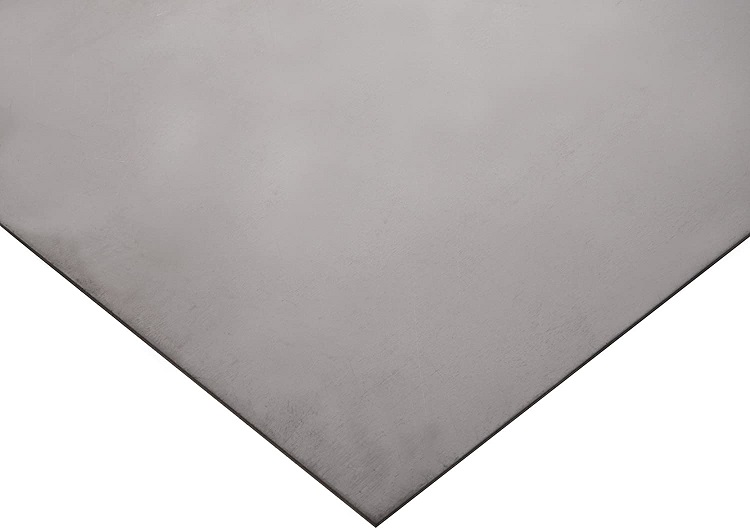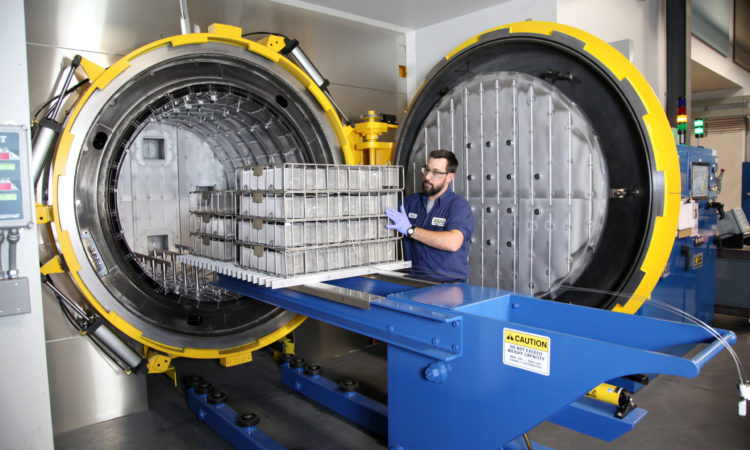Heat Treatment of Titanium Alloy

Heat Treatment of Titanium Alloy
Titanium alloy is favored by people for its excellent room temperature and high-temperature mechanical properties, outstanding corrosion resistance, and high strength. It has become an important structural material in the aviation and aerospace industries. The heat treatment of titanium alloy can significantly increase the strength of the alloy so that it can obtain the comprehensive performance of high strength and good plasticity.

Heat Treatment of Titanium Alloy
The Heat Treatment of Titanium Alloy Mainly Plays a Role in Adjusting the Structure.
The structure of titanium alloy is determined by thermal deformation, and heat treatment mainly only plays a role in adjustment. For example, heat treatment can only adjust the ratio of α phase and β phase obtained by thermal deformation, and the sheet structure produced by overheating cannot be changed into a dual-state structure by heat treatment.
The Heat Treatment of Titanium Alloy Is Limited by the Alloy Phase Composition.
Most near-α-type and stable β-type titanium alloys (except for a very small number such as Ti-2Cu alloy) cannot be strengthened by heat treatment, and only α+β-type titanium alloys can be strengthened by heat treatment.
Heating Temperature and Time Should Be Strictly Controlled
When titanium alloy is heated above the β transformation temperature, the crystal grains grow rapidly. In the subsequent cooling, the α phase nucleates and grows on the grain boundary first, and grows into the inside of the grain.
The β crystal grain size obtained after heat treatment in the β zone is relatively large, which can generally reach the degree that is visible to the naked eye. Moreover, the method of heat treatment cannot eliminate the coarse-grained structure of the titanium alloy, and the forging deformation must be used to change the structure.
Therefore, when heating before forging or heat treatment in the β zone, the heating temperature and time should be strictly controlled to prevent excessive grain growth.
Preventing the Formation of Embrittlement
Titanium alloys easily combine with oxygen, nitrogen, etc. at high temperatures, forming an oxygen-rich embrittlement layer on the surface. Therefore, forgings should generally be heat treated in a micro-oxidizing atmosphere. For some forgings whose surfaces are no longer processed, such as engine precision-forged blades, vacuum heat treatment should generally be used to avoid surface oxidation.
Controlling the Hydrogen Absorption
Titanium alloys tend to absorb hydrogen at high temperatures. Therefore, electric furnaces should be used as much as possible when heating or heat treatment before titanium alloy forging. If an oil furnace or gas furnace must be used, the furnace gas should be slightly oxidizing.
For some important parts, especially thin-walled forgings, the temperature and time should be strictly controlled during chemical milling to prevent excessive hydrogen absorption.
Paying Attention to Controlling the Heating and Cooling Rate
The thermal conductivity of the titanium alloy is low. When cooling after heat treatment, the thin section of the forging cools faster than the thick section, which causes uneven microstructure.
In some cases, due to the excessive temperature difference in the section of the titanium alloy forging during the heating-cooling process, excessive residual stress may be generated, resulting in warpage and deformation of the workpiece.
In the past, when the titanium alloy ingot with poor plasticity was heated before forging, the internal thermal stress was too large, which caused the ingot to fracture. Therefore, it is recommended to adopt the method of segmented heating to minimize the thermal stress inside the ingot or billet.
In summary, the correct and reasonable use of the titanium alloy heat treatment process is of great significance to prevent the failure of titanium alloy parts.
Conclusion
Thank you for reading our article and we hope it can help you have a better understanding of the heat treatment of titanium alloy. If you want to know more about titanium and titanium alloys, we would like to advise you to visit Advanced Refractory Metals (ARM) for more information.
Headquartered in Lake Forest, California, USA, Advanced Refractory Metals (ARM) is a leading manufacturer & supplier of refractory metals across the world, providing customers with high-quality refractory metals & alloys such as titanium, titanium alloys, tungsten, molybdenum, tantalum, rhenium, and zirconium at a very competitive price.
{{item.content}}
LEVE A REPLY
{{item.children[0].content}}
{{item.content}}






